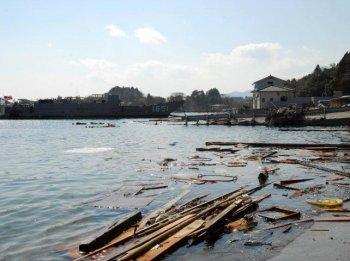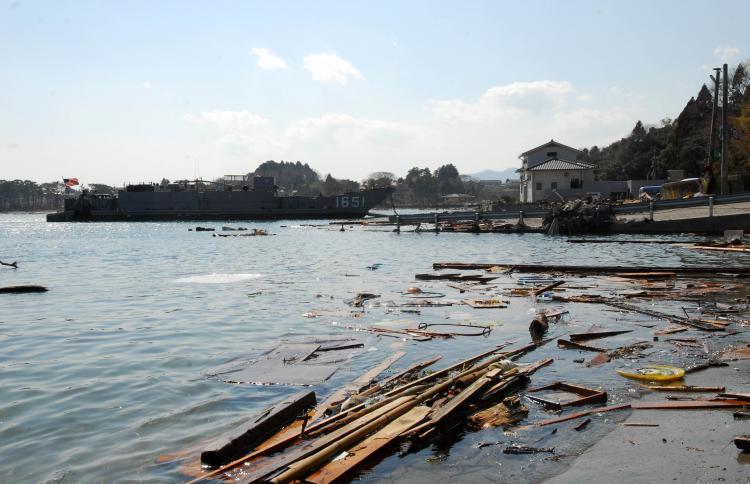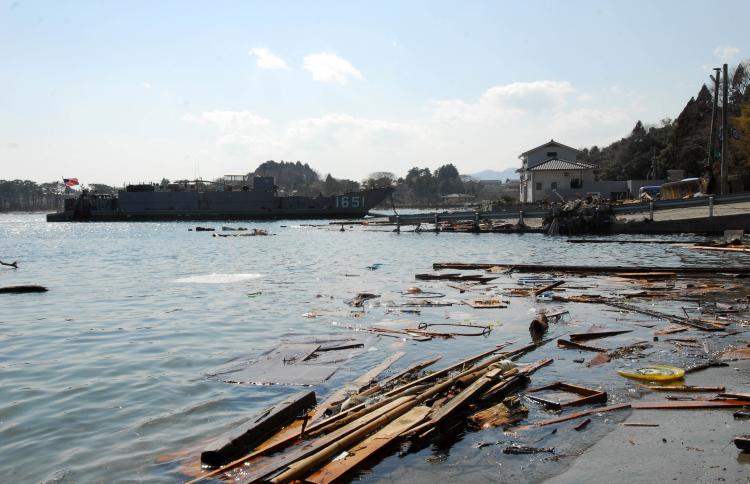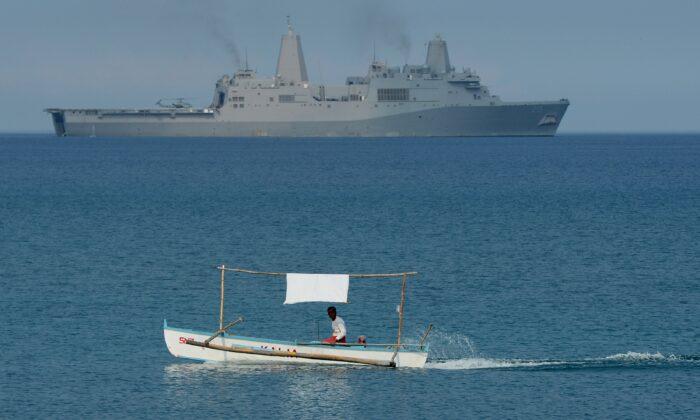With radioactive contaminated water building up at the disaster stricken nuclear power plant in Japan, 11,500 tons of contaminated water will be dumped into the sea, the plant’s operator Tokyo Electric Power Company announced on Monday.
According to TEPCO, “there is currently great amount of radioactive waste water in the turbine buildings of the Fukushima Daiichi Nuclear Power Station.” With the water buildup, the electronic equipment at the nuclear plant is at risk of being submerged.
Because the central radioactive waste disposal facility is currently already holding 10,000 tons of radioactive contaminated water, it was decided to dump the water into the sea.
TEPCO is reporting that the amount of low level radioactive water released is “one-forth the annual radioactive dose to which the general public is exposed in nature.”
While TEPCO and Japanese authorities have downplayed the impact that the radioactive water in the sea will have, concerns are mounting.
When it became clear last week that radioactive water was leaking into the sea, a representative of Japan’s Nuclear and Industrial Safety Agency Hidehiko Nishiyama told media there was no need for concern, and people should stay calm.
“People don’t drink seawater,” he said on the Australian Broadcasting Corporation in a translation, “and with the currents the radioactive material will dissipate quickly.”
“Also iodine-131 has a short half-life of eight days,” he continued. “So even if sea produce is found with high concentrations of radioactivity, by the time it’s consumed by humans the levels will have diminished considerably.”
While it is true that iodine-131 has a short half-life, Associate Professor Mark Diesendorf, author and deputy head of the Institute of Environmental Studies at the Australian University of New South Whales, said the comments were irresponsible. “People eat fish and other sea creatures, and they will be taking up the radiation,” said Diesendorf.
“What they are not saying is that if they are measuring iodine-131 in some concentration, it is certain that there will be other isotopes that they are not detecting, which are also coming out with it but maybe harder to detect,” added Diesendorf, a physicist who has been principal research scientist in Australia’s top science research organization, the CSIRO.
He said the leakage of plutonium-239 is of great concern, but harder to detect.
“Plutonium-239 emits alpha particles, which only travel a short distance,” he said. “They are totally harmless if outside the human body or an organism. But if they get inside, these are heavy particles. They can do an enormous amount of damage.”
According to the U.S. Environmental Protection Agency (EPA), plutonium is considered a toxic metal and “an extremely serious health hazard,” which can stay in the body for decades, increasing the risk of radiation and cancer to organs and tissues.
Plutonium can be inhaled as a contaminant in dust and can also be ingested with food or water. The EPA website warns that people who live near nuclear weapons production or testing sites may be exposed to plutonium “primarily through particles in the air, but possibly from water as well.” Plants can absorb small amounts of plutonium via contaminated soil.
Diesendorf said the information from TEPCO has not been reassuring, describing the data as “incomplete” and in some cases “contradictory.”
According to TEPCO, “there is currently great amount of radioactive waste water in the turbine buildings of the Fukushima Daiichi Nuclear Power Station.” With the water buildup, the electronic equipment at the nuclear plant is at risk of being submerged.
Because the central radioactive waste disposal facility is currently already holding 10,000 tons of radioactive contaminated water, it was decided to dump the water into the sea.
TEPCO is reporting that the amount of low level radioactive water released is “one-forth the annual radioactive dose to which the general public is exposed in nature.”
While TEPCO and Japanese authorities have downplayed the impact that the radioactive water in the sea will have, concerns are mounting.
When it became clear last week that radioactive water was leaking into the sea, a representative of Japan’s Nuclear and Industrial Safety Agency Hidehiko Nishiyama told media there was no need for concern, and people should stay calm.
“People don’t drink seawater,” he said on the Australian Broadcasting Corporation in a translation, “and with the currents the radioactive material will dissipate quickly.”
“Also iodine-131 has a short half-life of eight days,” he continued. “So even if sea produce is found with high concentrations of radioactivity, by the time it’s consumed by humans the levels will have diminished considerably.”
While it is true that iodine-131 has a short half-life, Associate Professor Mark Diesendorf, author and deputy head of the Institute of Environmental Studies at the Australian University of New South Whales, said the comments were irresponsible. “People eat fish and other sea creatures, and they will be taking up the radiation,” said Diesendorf.
“What they are not saying is that if they are measuring iodine-131 in some concentration, it is certain that there will be other isotopes that they are not detecting, which are also coming out with it but maybe harder to detect,” added Diesendorf, a physicist who has been principal research scientist in Australia’s top science research organization, the CSIRO.
He said the leakage of plutonium-239 is of great concern, but harder to detect.
“Plutonium-239 emits alpha particles, which only travel a short distance,” he said. “They are totally harmless if outside the human body or an organism. But if they get inside, these are heavy particles. They can do an enormous amount of damage.”
According to the U.S. Environmental Protection Agency (EPA), plutonium is considered a toxic metal and “an extremely serious health hazard,” which can stay in the body for decades, increasing the risk of radiation and cancer to organs and tissues.
Plutonium can be inhaled as a contaminant in dust and can also be ingested with food or water. The EPA website warns that people who live near nuclear weapons production or testing sites may be exposed to plutonium “primarily through particles in the air, but possibly from water as well.” Plants can absorb small amounts of plutonium via contaminated soil.
Diesendorf said the information from TEPCO has not been reassuring, describing the data as “incomplete” and in some cases “contradictory.”






